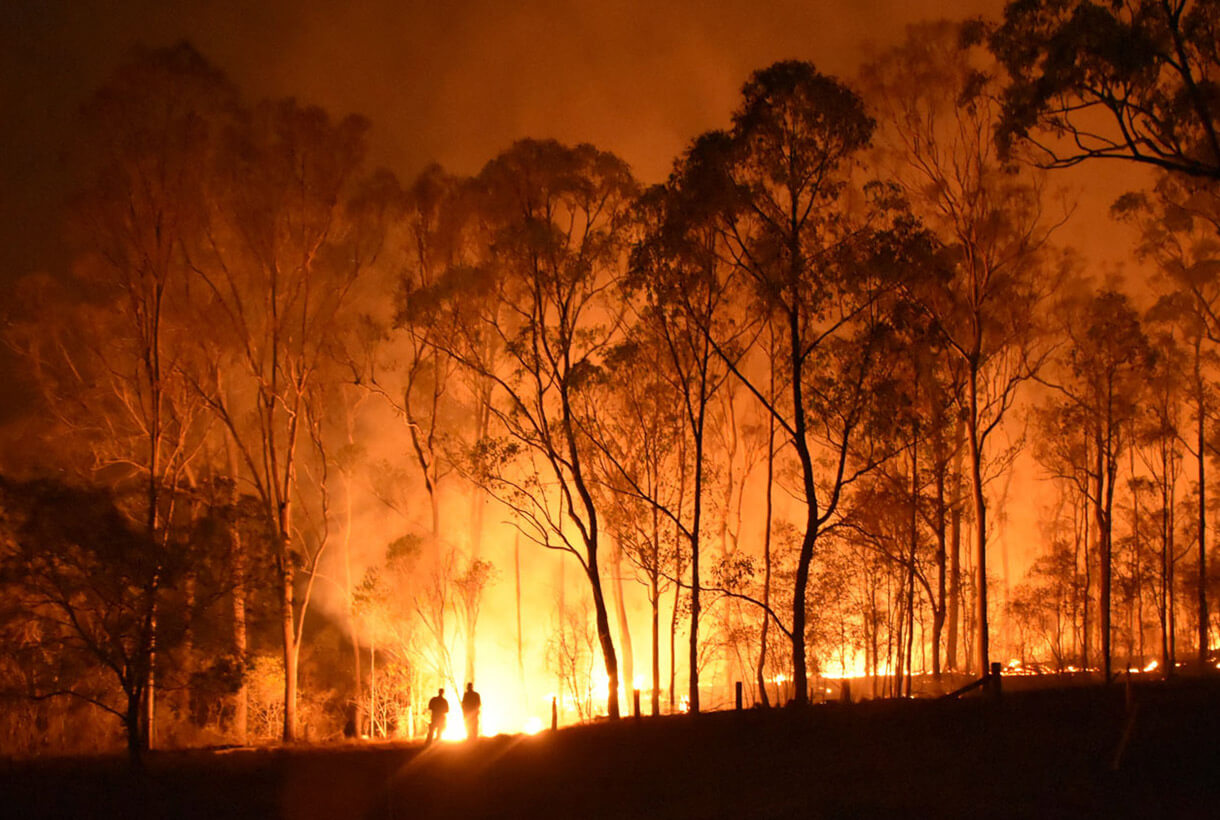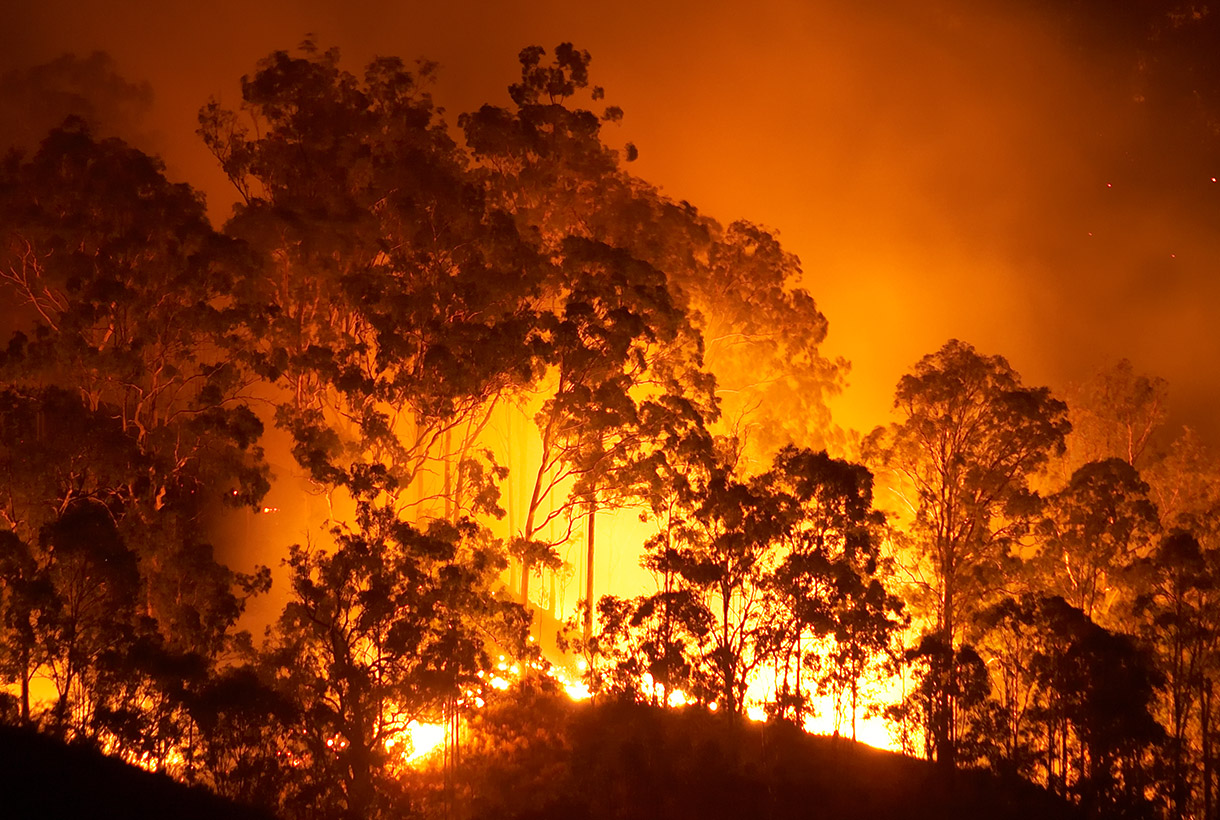A raging wildfire is a frightening prospect. It can break out with little warning, and when it does, it can move fast and consume everything in its path. The result can be widespread, long-term damage in the form of lost human lives, homes and businesses.
According to the National Interagency Fire Center, although the 10-year average number of wildfires in the U.S. each year dropped by about 20% over the past two decades, the average number of acres burned is up by nearly 50%. Yet despite the escalating danger posed by wildfires – both natural and man-made – many organizations and agencies remain unprepared to handle the risk.
According to the 2024 OnSolve Global Risk Impact Report, natural disasters (including wildfires) were reported in the top five physical threat experienced by both executives and government leaders in the last 24 months. And only 45% of executives reported having a mitigation plan in place for natural disasters, even though it’s the top physical threat on their radar for 2024.
How prepared is your organization or community to manage the threat of a wildfire? It’s worth spending some time assessing your wildfire communications to identify gaps. Start with these three fundamental questions.
1. Do You Know What to Do When a Wildfire Threatens?
Every organization should engage in education and training long before any smoke appears on the horizon. Employees and residents need to understand the basics of evacuation, including the type of alerts to expect, what information they’ll receive and tips for leaving their homes or offices in the fastest, safest way.
At the same time, you also need to train response teams on how to use a mass notification system. Regular tests ensure your personnel are familiar with and comfortable delivering mass notifications when stress levels are high. In fact, organizations that take time to educate their employees on how to send alerts see significantly higher adoption and response rates.
Elevate Your Wildfire Preparedness
Improve your wildfire preparedness with expert tips and resources.
2. How Will You Notify Those in the Path of the Fire?
Communication is vital as soon as you become aware of danger. You must be able to deliver urgent information as quickly as possible, especially if evacuation is a key message. A mass notification system enables you to deliver alerts via multiple modalities, including email, text, phone call and social media. This will ensure you reach people, even if some channels are compromised due to the fire.
Be sure to segment alerts with information specific to each audience group you need to reach. For instance, vendors will need to be told to delay or reroute shipments, while residents will need to know to avoid certain routes.
3. What Is Your Post-Wildfire Transition Plan?
After the wildfire has been contained or extinguished, it may take several days or weeks before people can return. Since damage to buildings, local road closures and utility interruptions will make the area unsafe, you should expect to maintain a communications program long after the embers have died out.
A thorough communications plan can streamline this effort. To smooth the transition back to normal, create message templates for the recovery effort, such as repair progress, office closures, supply chain delays, etc. When you keep everyone informed, you reduce the odds that people will return too early, while conditions are still unsafe.
Successful outcomes never happen by chance. When every minute counts™, preparation is the best way to protect people and operations.
Get expert advice and best practices for preparing for, communicating during and recovering from wildfire: Download our Wildfire Preparedness Kit.


